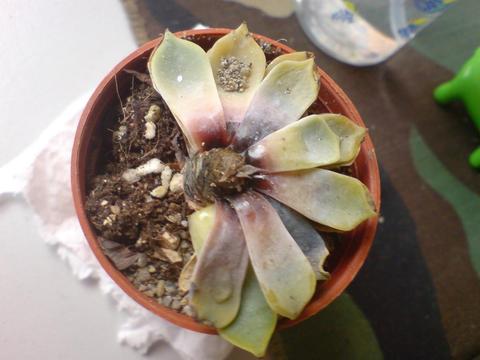Warning signs
An article from Proven Winners demonstrates that the essential issue with overwatering has to do with the roots. The root of the plant is its life saver. Without healthy roots, the plant can’t take in supplements and develop. An excess of water will cover the roots and make it impossible for them to breathe. The water will likewise fill in as an obstruction that doesn’t allow any fertilizer to reach the root. After some time, this will prompt root spoil. The following are signs that you might be overwatering:
1. Wilting
Wilting may be something you associate with too little water (and this can certainly be a sign of that!), but the difference will be in the soil. According to an article from JAIN, if your soil is moist and yet your plant is wilted then most likely this is because it has too much water.
2. Yellow leaves
If your leaves are growing slowly and have a yellow tinge, then they are probably taking in too much water.
3. Tips of leaves turn brown
Brown leaves can be a sign of too little or too much water. An article from JAIN indicates that the way you can tell the difference is how the leaves feel. If you aren’t watering enough, then the brown leaves will feel dehydrated and crisp. If you are watering too much, then the leaves will be soft and limp.
How can you save your plant?
1. Move it to the shade
Plants in a shaded area use less water. Even if the plant is a sun plant, you should move it from sunlight until the water situation is under control. Once it is stabilized, you can move it back to the sunlight.
2. Allow the pot to drain
Make sure the pot can drain some of the water out. The idea here is to allow the water to escape as much as possible. You can create holes in the planter or repot the plant altogether. Allowing the plant to remain in standing water will significantly decrease its chances of survival.
3. Create air pockets
The plant’s roots need air. You can create air pockets by shifting the pot and tapping it on its side so that the soil ball is loosened. This will allow the roots the opportunity to receive much-needed air that was trapped by water.
4. Allow the soil to dry
Avoid watering the plant until the ground is dry to the touch. Don’t allow the plant to get too dry as that can also kill it. You can opt to mist the plant if the leaves look brittle even if the soil is still damp.
How to avoid overwatering
1. Know your plants
Make sure that you have an understanding of how much water your particular plant needs. Some plants need soil to be consistently damp while others thrive on a more sporadic watering schedule. If you don’t know, be sure to reach out to a professional who can answer your questions.
2. Water deeper, not more often
Watering deeper into the roots will ensure that the plant is receiving adequate water without having to feel like you need to water each day.
3. Add mulch
Mulch or compost can work as a drainage system for the plants.
4. Don’t be fooled by a dry surface
The surface of the soil always dries out first. To get an idea of how dry the soil really is, probe the soil and turn over a bit of it. If the underneath is still moist, then the plant does not need water.
5. Prioritize new plants
Young plants generally do require more water than established plants. However, be careful not to overcompensate just because they are the priority. However, young plants do not have a set root and will rely on surface water to thrive.
Source: gardening.diyeverywhere.com


1 thought on “How To Save Your Overwatered Plants”
addy
(January 25, 2019 - 5:54 am)Great post with very useful tips for any gardener. I never thought wilting can be a sign of over-watering. I also like the idea of creating the air pockets and i will give it a trial.
Thank you for sharing!!